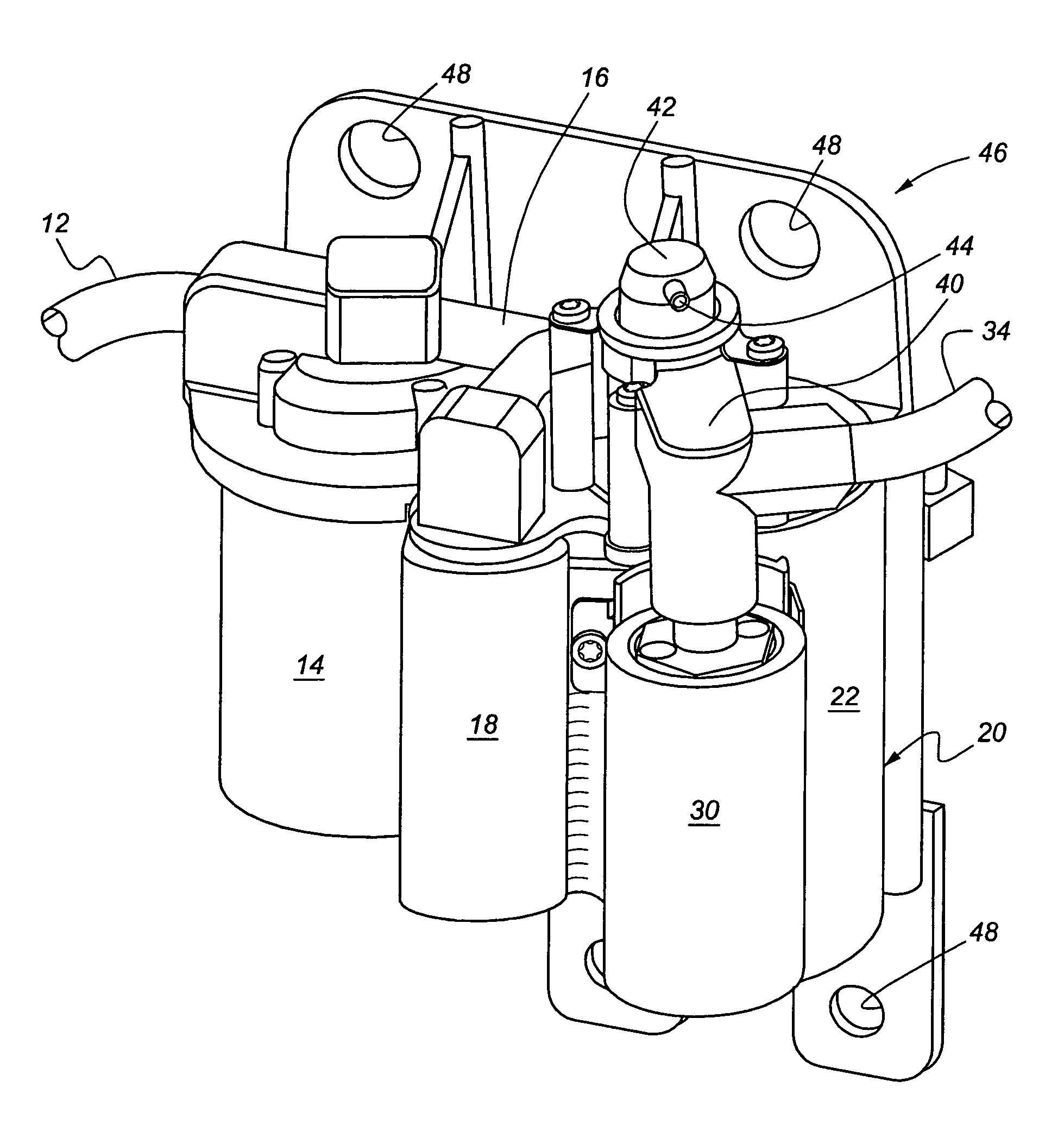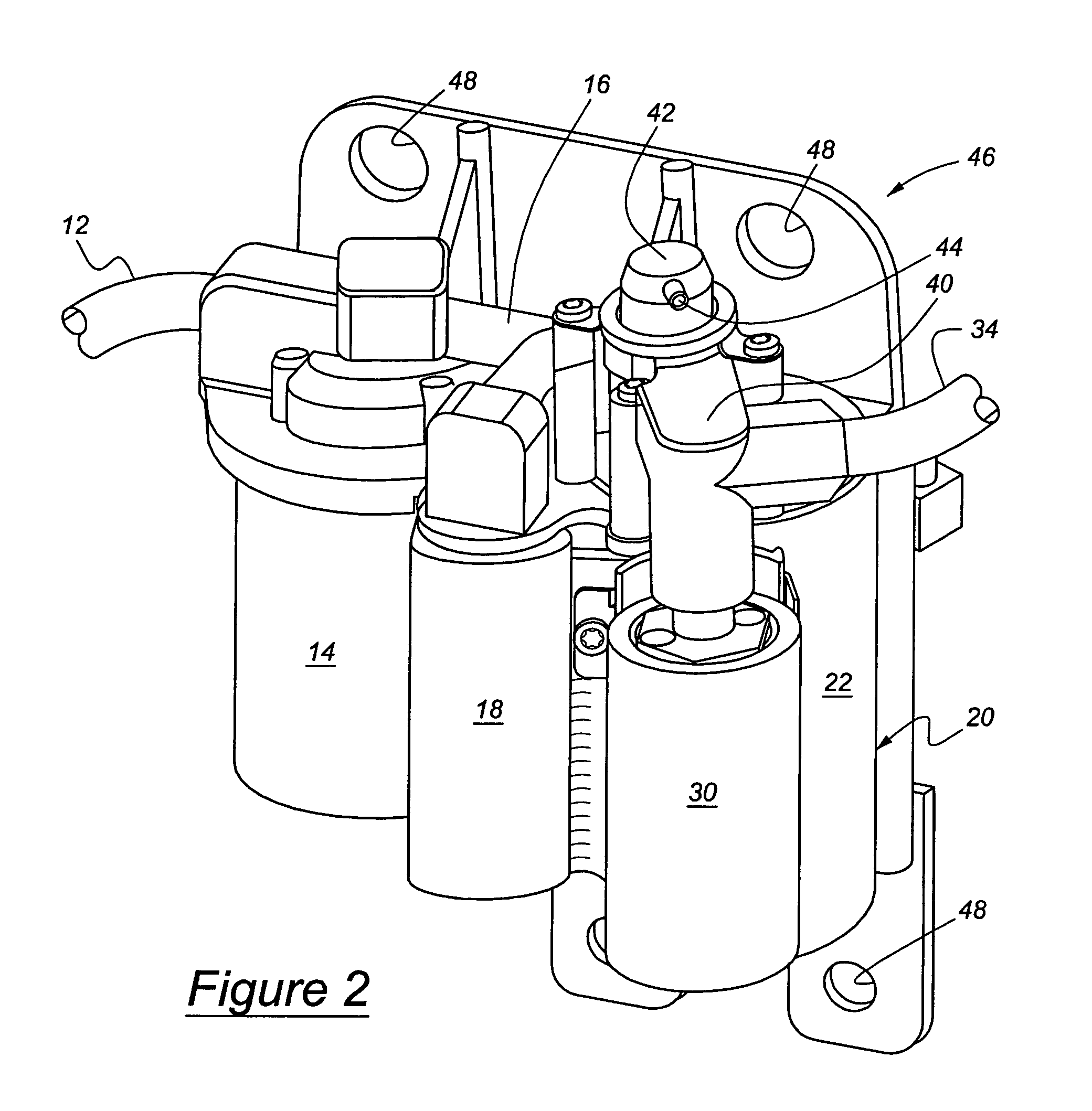Marine vapor separator with bypass line
a bypass line and vapor separator technology, applied in the direction of fuel injection apparatus, charge feed system, non-fuel substance addition to fuel, etc., can solve the problems of marine applications that are often subject to harsh vibrations and jarring, and cannot supply uninterrupted flow of fuel under all operating conditions, so as to reduce the number of possible fuel leakage points, reduce the risk of fuel leakage, and eliminate the added design and fabrication cost
- Summary
- Abstract
- Description
- Claims
- Application Information
AI Technical Summary
Benefits of technology
Problems solved by technology
Method used
Image
Examples
Embodiment Construction
[0016]Referring to the Figures, wherein like numerals indicate like or corresponding parts throughout the several views, a fuel supply system for a marine internal combustion engine in is illustrated schematically in FIG. 1.
[0017]The fuel supply system includes a fuel tank 10 from which tank-filter line 12 directs fuel to a water filter 14. In the water filter 14, any water present in the fuel is separated. Typically, the water filter 14 is replaced during regular servicing. A filter-pump line 16 routes fuel from the water filter 14 to a low-pressure type lift pump 18. The lift pump 18, in turn, urges fuel through a pump-separator line 19 into a vapor separator, generally indicated at 20.
[0018]The vapor separator 20 thus receives liquid fuel from the fuel tank 10 through this relatively direct distribution system. The primary purpose of the vapor separator 20 is to collect and discharge vapors given off from the fuel. The vapor separator 20 is defined by a housing 22 which is sealed...
PUM
 Login to View More
Login to View More Abstract
Description
Claims
Application Information
 Login to View More
Login to View More - R&D
- Intellectual Property
- Life Sciences
- Materials
- Tech Scout
- Unparalleled Data Quality
- Higher Quality Content
- 60% Fewer Hallucinations
Browse by: Latest US Patents, China's latest patents, Technical Efficacy Thesaurus, Application Domain, Technology Topic, Popular Technical Reports.
© 2025 PatSnap. All rights reserved.Legal|Privacy policy|Modern Slavery Act Transparency Statement|Sitemap|About US| Contact US: help@patsnap.com



